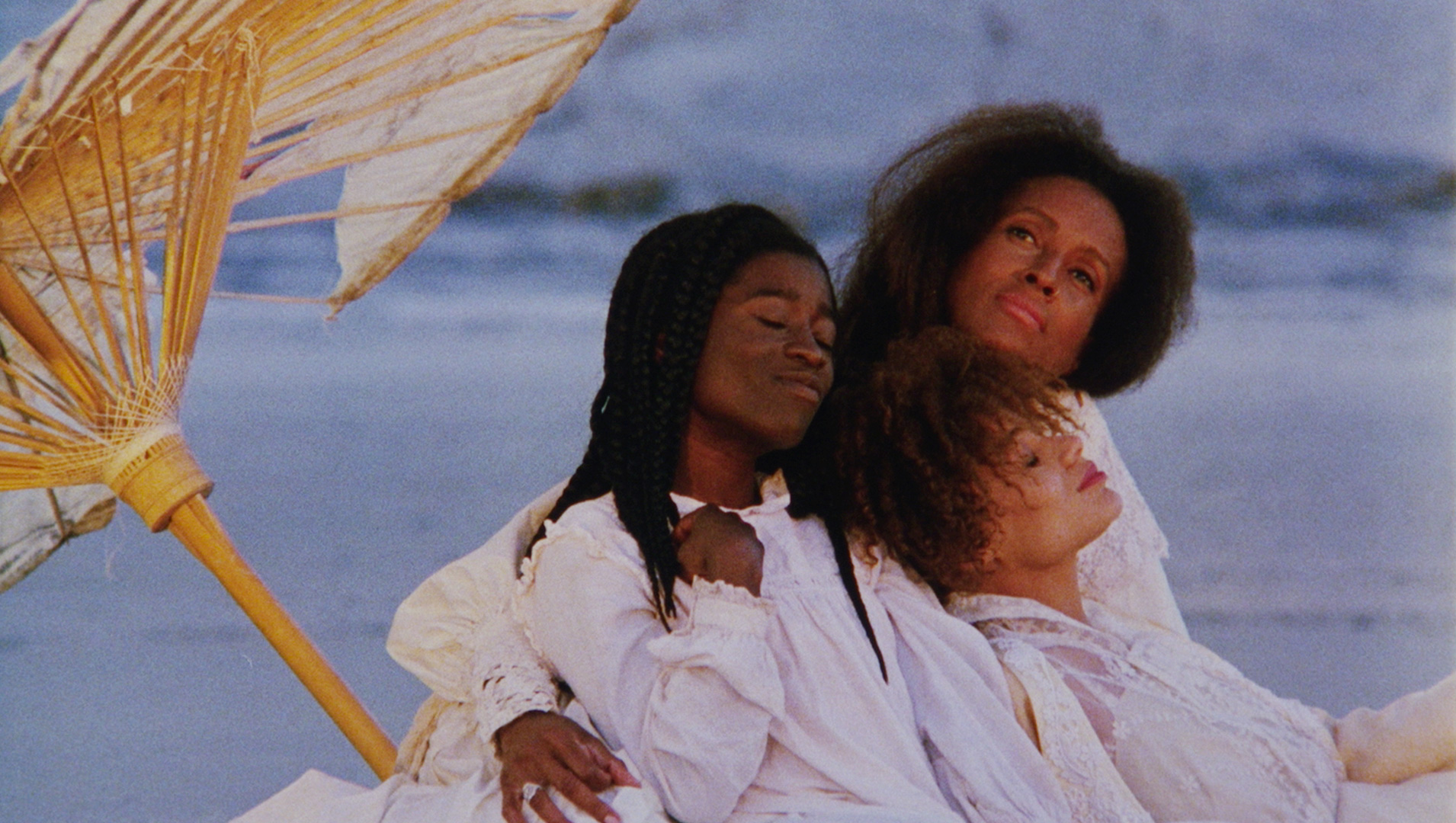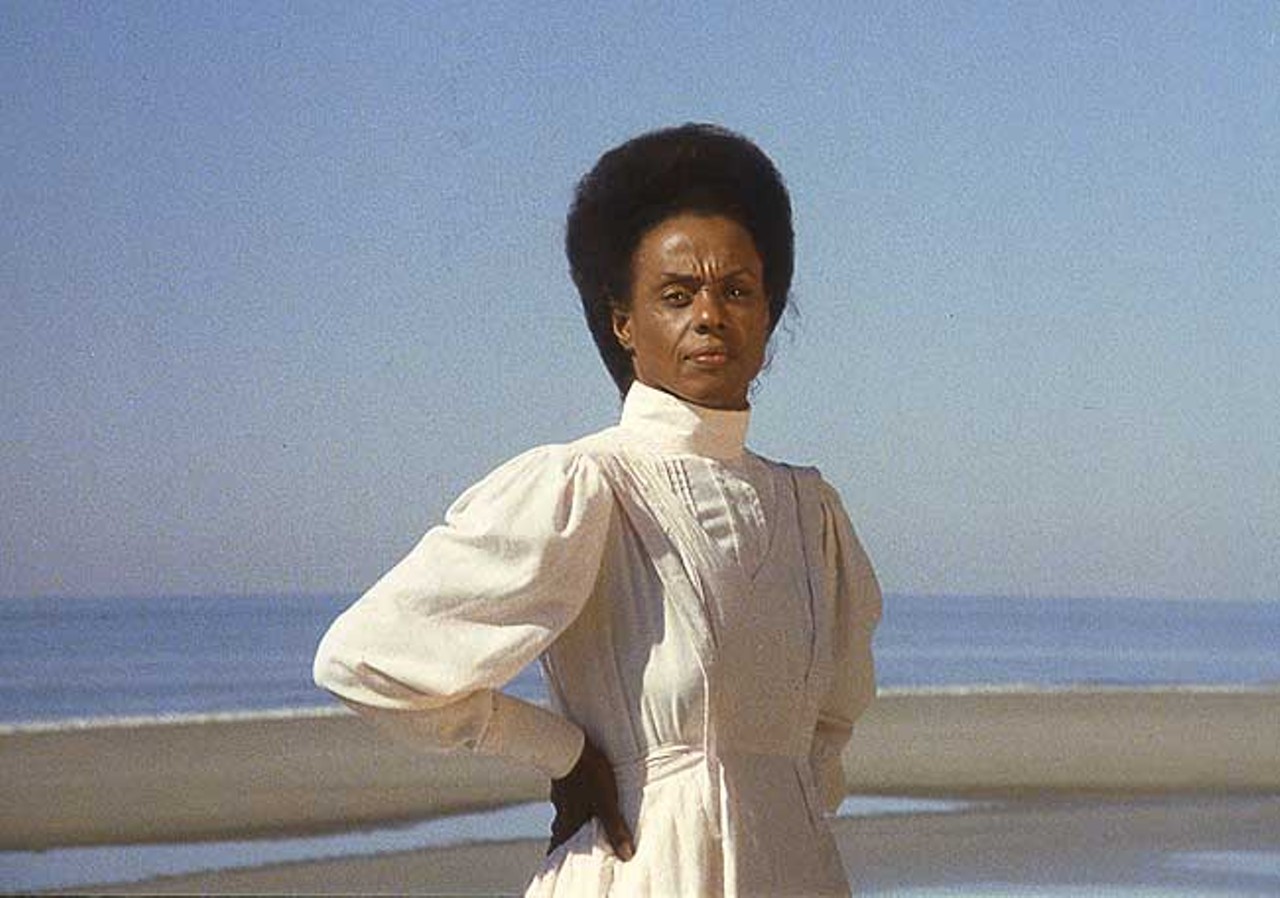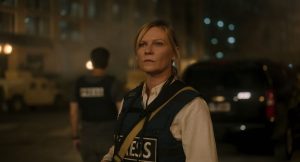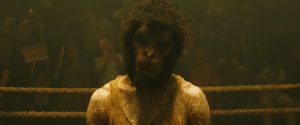Reviews include Irena’s Vow, The Beast, and Before I Change My Mind.
The Triumphant Return of “Daughters of the Dust”
November 22, 2016
By Andrew Parker
It took almost 100 years after the birth of cinema for a black woman to direct a film that would receive a major theatrical release in the United States.

Julie Dash’s groundbreaking Daughters of the Dust is that film. 25 years after its Sundance premiere in 1991, and following a 2K restoration (which opens for a week-long run at TIFF Bell Lightbox on November 25th) that comes with newfound cultural context, Dash’s work remains branded by some critics and cineastes — many who should often know better — as a “cult” film. Such a term has always carried with it a sort of backhanded connotation; a way to make a financially unsuccessful or under-appreciated work into something palatable and easily labeled in hopes more will see it. In the case of Daughters of the Dust, such a term comes across as a bizarrely racist kind of label.
Daughters of the Dust is a period picture that comes rooted firmly in Gullah and Geechee traditions, customs, and beliefs that were meticulously researched by Dash. It takes place over the course of a single day in August of 1902 among members of the Peazant family on the Sea Islands, just off the coast of Georgia and South Carolina. It finds the family divided and at a crossroads. Relations who have long since left their island heritage behind for the “progress, culture, and wealth” of the North are returning to bring other members of the family who wish to leave back to the mainland. The refined and newly-minted Christian, Viola (Cheryl Lynn Bruce), somewhat callously brings along a snappily dressed photographer (Tommy Redmond Hicks) to document her trip back to her homeland, as if the Gullah were some sort of patois-accented anthropological curiosity. Also returning home is the vastly more grounded, admirable, and somewhat unjustly shunned Yellow Mary (Barbara O.), who comes off as a worldly traveler rather than someone trying to outrun a culture that Viola sees as outmoded. She also returns with a female travelling companion that implies a certain degree of lesbianism that probably led to Yellow Mary leaving the community years ago.
The place where the returning family members reach land by boat is Ibo Landing, which many viewers won’t recognize as an important, yet subtle cultural reference. Although Daughters of the Dust takes place on Dawtah Island, almost all of the Sea Islands during the film’s chosen era had an Ibo Landing. These islands, which were once home to the Cherokee people before American colonization, became a port for slave ships. The legend of Ibo Landing is one that permeates island culture in the region: As folklore goes, a group of slaves from West Africa took a look at the land they were about to set foot on, and then — while still shackled — walked back to Africa through the waters (or flew in some versions of the tale). Many islands along the coast of Georgia and South Carolina would lay claim to this legend (which is based somewhat in the facts of a real event) in an effort to preserve culture, and it’s not hard to see the symbolic nature of this story as it pertains to Dash’s depiction of Viola and Yellow Mary returning to a place they’re just going to leave again in a day’s time.

Naturally, the prospect of certain relations leaving the community has caused a rift in the family. The matriarchal Nana (Cora Lee Day) pleads with her family to remember the culture they came from and to question if their lives will at all be improved in a land where persecution, the scars of slavery, and racism still exist. Nana’s headstrong daughter Haagar (Kaycee Moore) has grown weary of her mother and staunchly advocates for leaving the island, but her daughter Iona (Bahni Turpin) doesn’t want to leave because she has fallen in love with the eloquently spoken Cherokee boy, St. Julien Lastchild (M. Cochise Anderson), so named because he is in all likelihood the last of his people to inhabit the land. Most conflicted of all is Eli (Adisa Anderson), who sees the benefits of leaving the island for his expecting wife, Eula (Alva Rogers), but who can’t forget that the last time they were on the mainland he watched his wife get raped by a white man. (The film’s tackling of sexual assault is both brutal and subtle in that no one ever uses the word “rape,” and the men seem uncomfortable to bring it up at all.)
The part of the familial conflict most closely related to the feelings of Eli and Eula comes narrated by their unborn child, voiced by Kai-Lynn Warren, and the stylistic gambit helps to make Dash’s screenplay feel more like a visualized oral history than a fictionalized film. While it introduces a somewhat fantastic and mystical element, it serves as a perfect counterbalance to Dash’s more documentary touches. Daughters of the Dust benefits from taking the perspective of whoever is steering the story at any given time, and Dash and cinematographer Arthur Jafa often film even the most intimate of moments in wide angles that not only showcase the breathtaking natural beauty of the land, but emphasize a sense of community over individualism.
There’s a lived-in sense of academic and storytelling accomplishment to Dash’s work, and while she rooted her narrative in stories she was able to coax out of relatives from the region, the filmmaker grew up far from the area she depicts here. Dash was raised in the Queensbridge Projects of Long Island, New York; She was first introduced to filmmaking by way of a cinematography class at The Studio Museum in Harlem after tagging along with a friend. From there, she would graduate from City College in New York with an eye towards attending UCLA and following in the footsteps of filmmaker she idolized, predominantly those involved with the “L.A. Rebellion” of the 1960s, like Charles Burnett and Larry Clark.
It was during this point early in her maturation process as an artist that she experienced a setback that would change her life forever. Although she applied to UCLA, she was initially denied admission on a technicality. In order to be accepted, she was asked to provide three letters of recommendation from her professors, two of which were from white professors and one from a black professor. In a heartbreaking turn of events that she never suspected, only the white professors sent in their letters of recommendation.
As she states in her own words from a book she co-authored in 1992 about the making of Daughters of the Dust, Dash says of the setback:
“What I learned then was that I would sometimes have to face sabotage, often from ‘my own people.’ I would have to feel that pain over and over again. While making Daughters of the Dust I encountered this to an extent that I had never suspected.”

Dash had already moved to Los Angeles with the conviction that she would be attending UCLA. When that didn’t pan out, she began working in the film industry in various capacities, at one point getting a chance to work alongside Larry Clark as a sound operator on his 1977 film Passing Through. Eventually, Dash would make her way to the AFI and then finally to UCLA, but outside of creating a handful of highly acclaimed short films that resonated within the black filmmaking communities, she wasn’t much closer to making Daughters of the Dust, or any feature for that matter, a reality.
Dash began constructing the screenplay for Daughters of the Dust right around the birth of her first child in 1984 after toying with the idea since the mid-1970s, and she was ready to shoot the film as early as 1986. Financing the film proved almost impossible. American distributors and producers thought the film was too foreign feeling for mainstream audiences, despite the praise Dash often said was lavished upon the screenplay. European and international producers found the material too American. As the 80s turned into the 90s and “black cinema” became enamoured with studio produced “New Jack” narratives like New Jack City or Juice (both of which were massive box office successes around the time Daughters of the Dust finally saw release), Dash found that there was something almost too realistic about her work for people to buy into it. As she also states in her book, black audiences, like white audiences, generally liked to watch films about characters that they didn’t actually want to be, but found themselves fascinated watching. Viewers and producers didn’t seem to want to be reminded of who they were in the past, but preferred seeing who they didn’t want to be in the here and now. In 1988, several years after Dash began shopping around the completed screenplay, she finally found the approximately $800,000 budget for Daughters of the Dust through a partnership with PBS’ American Showcase.
Shooting on a tight 28-day schedule that had to compete at times with Hurricane Hugo, it wasn’t a painless production, but one that was made almost exactly as Dash had intended the film to be made. The film’s unique melding of Christian, Muslim, and Santeria faiths — with a dash of atheism and agnosticism thrown in for good measure — remained intact to heighten the family’s sense of spiritual and cultural flux. With the exception of the lone character who acknowledges the island’s rooting in Indigenous culture, the cast is entirely black, predominantly female, and speaking in an archaic dialect that at times required subtitles for the audience to process it. The dialogues and storylines feel expansive and Shakespearian in nature, a perfect counterpoint to Jafa’s pastoral capturing of the island landscapes. The costuming was a blend of modest attire in the case of the island people and ornate dresses worn by the returning family members to show off their success like preening peacocks with all white feathers, with a culture clash playing out just based on how the characters move and act without any of them having to say a single word if they don’t have to. The actors in the roles are cast frequently with nods back to the “L.A. Rebellion” she admired and gained strength from. It’s an assured, director-driven effort that feels vital, heartfelt, and uncompromising.
After Daughters of the Dust wrapped, it began to gain steam on the festival circuit. It garnered acclaim at Sundance in 1991, where Jafa’s cinematography took home a prize, but the film itself would lose the Grand Jury prize to Todd Haynes’ Poison (which, as great of a filmmaker as Haynes’ is, now seems like a poor decision in comparison). Theatrical distribution of the film was picked up by Kino International (now Kino Lorber, who just this year acquired a nitrate print of the aforementioned Motherhood for restoration), who specialized predominantly in foreign language films, but who also recognized that there was still something foreign about Dash’s work.
The distinction of Daughters of the Dust as the first wide release from a black, female filmmaker could be somewhat debatable, as it never stood the same chance that a film like Juice or New Jack City would have in the greater marketplace. Kino International, which had nowhere near the marketing strength of a major studio, gave Daughters of the Dust a platform release throughout 1992, but while critical reception was generally positive, it was always a strategy that would never give its intended audience within the black community long enough to see the film in some areas, or even know it was being released in others. Building necessary word of mouth proved almost impossible, and despite raves from many who did get a chance to see it in theatres, Daughters of the Dust got labelled as a “cult film” and relegated to the sidelines of cinematic history for far too long. In 2004, it was selected for preservation by the U.S National Film Registry at the Library of Congress, but even that didn’t give it a larger audience.

One hoped that the critical acclaim for Daughters of the Dust would have translated into more work for Dash. In a gross twist of events, Dash has, to this day, not yet had another theatrically-released feature. She worked frequently in television and music videos throughout the 90s and 2000s, but getting another theatrically released effort off the ground proved to be nearly impossible. She wrote a sequel novel to Daughters of the Dust in 1997, but that was largely the last anyone really heard of the film for quite some time. After breaking through that initial glass ceiling, it was almost as if the powers-that-be set about to construct a stronger ceiling; one reinforced with concrete.
While Cohen Film Group had picked up Daughters of the Dust with the intention of remastering the film for a proper Blu-ray release, the biggest reason for the film’s cultural resurgence and theatrical re-release is, surprisingly, Beyoncé, and not the emergence of high profile black, female filmmakers like Ava DuVernay or Toronto’s own Stella Meghie, or a renewed spotlight on films that question black American masculinity like Barry Jenkins’ Moonlight. When the pop icon dropped her second visual album Lemonade — a smartly constructed work of many different filmmakers and cinematographers dripping with visual allusions and references to countless films, paintings, and works of literature — many acutely observed direct references to Daughters of the Dust, especially in terms of cinematography and costuming. I would argue that as a “film,” Lemonade gets most of its power from the interludes of spoken word poetry provided by the writings of British-Somali poet Warsan Shire and Queen Bey’s smouldering presence, but anything that can bring this landmark cinematic work to a larger audience is a cause for celebration.
With Daughters of the Dust, Dash created a timeless plea for viewers to not live in the past, but to consider the memories of what has been left behind. And while the scars of colonialism will never fully go away, Dash wants the viewer to consider what people choose to remember and what they choose to forget, and for them to think long and hard about how they came to those conclusions. The title of her film suggests something that might blow away in a breeze, and for a while, the film’s quiet reputation suggested to some that it had indeed done just that. In reality, Dash’s film has always been a must-see, and it remains one of the best films of the 1990s.



